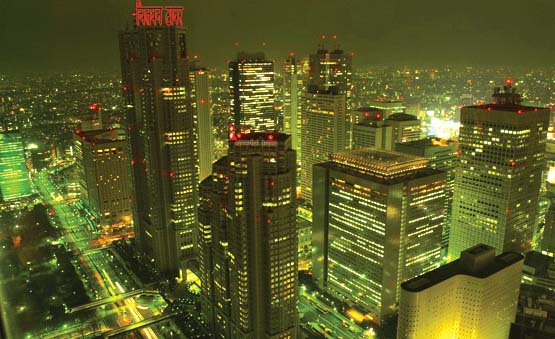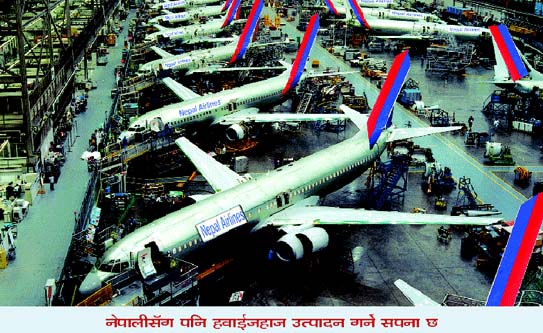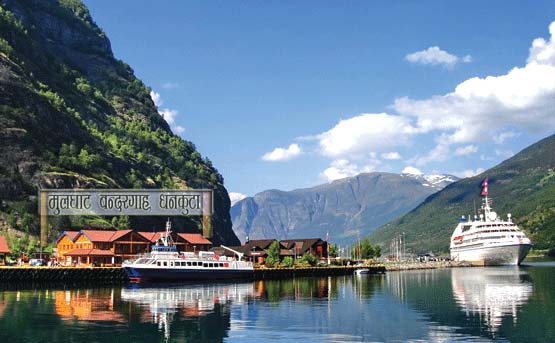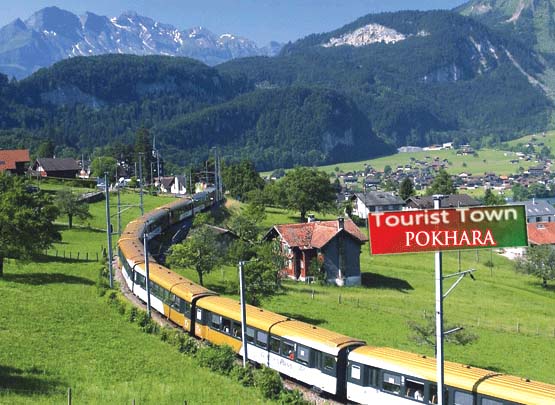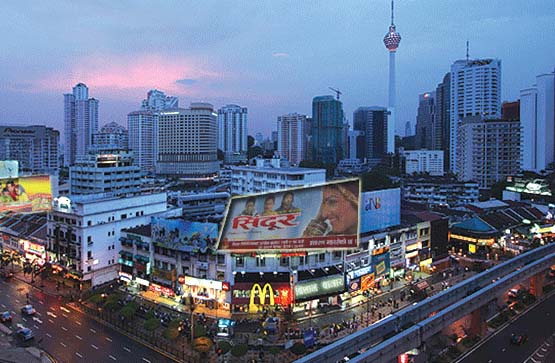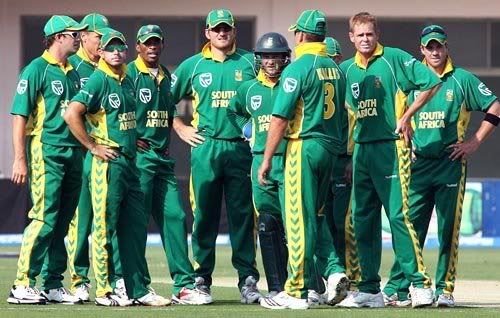
Obama Injects Stimulus: But will it work?
Economic Stimulus May Bypass Poverty Eradication?
Prof. J. George and Ayushya Mohan George
The announced economic package is primarily aimed at avoiding bankruptcy of a few at the cost of neglecting poverty eradication. The 836 million ‘aam adami” appears to have lost relevance with this spectrum of economic activities targeted as the main recipients.
Public service delivery mechanism as domestic demand stimulant, hence, attains exceptional significance when global meltdown in market fundamentals leads to loss of confidence along with depression. A close reading of Paul Krugman’s columns in the New York Times should convince any hard core sceptics.
Poor people in particular should not despair if appropriate economic stimulus as public expenditure is stepped up. Or will fiscal prudence driven public expenditure protocol make a mockery of even recent enactment of the social security law for the unorganised sector? Fiscal profligacy, though, will accelerate movement towards mocking the poor people.
It is extremely momentous, however, to ensure modest mechanism to access basic public services like health care, sanitation, drinking water and education; and access to meaningful political participation (73rd and 74th amendments to the constitution), respectable work and modest security in addition to adequate access to income to steer the stimulus package indeed towards a sustainable and real social protection.
The Indian Constitution and the millennium development goals (MDGs) has mandated to ‘Take Action’ to end poverty and inequality. Did we succeed in either? Should not poverty/BPL be such an emotive issue today as well? Why does it not keep popping up in a typical Gresham’s Law fashion every day in the media?
A plausible explanation is available if we cared to revisit Nobel Laureates Amartya Sen and Eric Maskin or the 2008 commemoration theme of the International Day (17 October) for the Eradication of Poverty (IDEP), namely, ‘human rights and dignity of people living in poverty’.
Income is essential to acquire material personal effects in this consumer driven world. The famous 17th century philosopher Immanuel Kant posited that whereas material possessions are replaceable, dignity of the human beings is distinct and hence irreplaceable.
Prof. Amartya Sen is very categorical in stating that all development agenda must underscore ‘dignity of human beings’. His treatises on famines and social security, etc. are prime examples suggesting protocols for practicing such precepts.
Eric Maskin through his “theory of mechanism design” has demonstrated that to attain a given goal, suitable and appropriate mechanisms need to be designed.
UN (Division of Social Policy and Development) maintains poverty as “a human condition of deprivation of resources, capabilities, choices, security and power necessary for the enjoyment of an adequate standard of living and other civil, cultural, economic, political and social rights”.(42 words)
The bottomline is to move away from exclusionary to inclusionary platform of actions and deeds. The interdependence of three factors, namely, access to income, basic services and level of people’s participation makes or mars goal attainment, albeit with people’s dignity, of the economic stimulus package.
The received global wisdom and thesis is that faster economic growth is the only remedy to come out of poverty. The Planning Commission and all international development finance institutions subscribe to this flawed obsession and theory. In tune with the Eleventh Five Year Plan (2007-12) objective of faster and inclusive economic growth, some states, Haryana for instance, has added now a ‘social revolution’ spin.
The average year to year economic growth, such as in Haryana, during the period 1999/2000 to 2007/08 has been estimated to be about 8.67 per cent. The derived per capita income surely is higher than the notional poverty line. Under these economic circumstances consumption will soar to raise the volume in the own tax revenue kitty. This and other associated steps in public expenditure control template advocated by the Bretton Woods institutions lead to the much celebrated fiscal governance outcome of actions diligently taken under the fiscal responsibility and budget management (FRBM) circuit in the country.
The immediate question that will follow is at what cost to the society. The bitter truth, however, is that recently one in every four households in Haryana has been officially declared to be poor. Hence the nagging concern that the economic stimulus will impoverish more than ameliorate the targeted as well as the general masses.
Can it be mere neglectful that this new poverty estimate is different from the Planning Commission reckoning? Is this contradiction valid given the economic prosperity ushered in by the new ‘growth story line’? Should rise in poverty follow rise in income? Will current economic slowdown adversely impair all good work expected out of the social security law enactment or enhanced public expenditure?
This is grossly undesirable and yet a practical contradiction witnessed in a fiscally prudent and high economic growth state. If we consider attainment levels in the 18 targets of the UN millennium development goals (MDGs) the emerging social regression sends chill down the spine. How does one justify the feasibility of this paradox?
The paradox is made feasible due to the limitations inherent in the income measure of poverty. A poor delivery mechanism across programmes invariably explains the reality. It is explained also by the crucial interlocking mechanism between poverty reduction and human rights. Both are issues of societal rights and obligations rather than mere welfare or selflessness of the public institutions’ service delivery dictum. This query attains frightening dimension right across developing countries that is growing slower than the Haryana state economy.
A foolproof, transparent and painless mechanism to ensure comfortable access to basic public services is the answer. The social construct, for instance,does not follow a narrow and beaten path of ‘ceteris paribus’ so wantonly used in the economic growth calculations.
The social profile in liaison with the economic milieu does provide useful and crucial insights to the paradox. In a more functional term, however, current status of mechanism to access the delivery of myriad public services by the states vindicates feasibility of this inconsistency.
A more cerebral explanation to this absurdity is found in the ‘capabilities’ and ‘functionings’ treatise of the Nobel laureate Amartya Sen. Capabilities are tangible and intangible resources or endowments with the household, while ‘functionings’ are the activities, operations or performance rooted in the capabilities of the household.
Thus higher income should encourage better access (demand segment) to basic services and better functioning (supply segment) of the public delivery institutions. Latter has not happened and the former, given a chance, forcefully get articulated at the hustings. The economic stimulus package must address this dichotomous challenge. The interim budget of the central government did make a beginning by raising the threshold support level to the rural employment guarantee scheme and the rural infrastructure flagship scheme called “Bharat Nirman”. The urban renewal missions too see a heightened support along with a number of soft social sector schemes and programmes in health and education. Increased and higher budgetary support will only be one part of the stimulus package. The other part will be the triology of accessibility mentioned earlier.
Be that as it may, the apex 16 member expert group constituted recently (August 2008) in the union ministry of rural development must be seized of the quibble over numbers in all seriousness. Their task however has been made easier and feasible with the groundbreaking recommendations of the National Commission for Enterprises in Unorganised Sector (NCEUS) headed by Prof. Arjun Sengupta. NCEUS has estimated vulnerability of at least 836 million ‘aam adami’ spread across rural-urban spaces to livelihood and food security concerns in India. Cavil over numbers, in comparison, will merely serve the livelihood security of a handful of number crunchers.
We must recall here that the erstwhile PRSP intervention of the World Bank suggested that poverty data can and must be ignored. The current World Bank flavour, District Poverty Intervention Programme (DPIP) also suggests the same bold inference. The flawed enthusiasm for poverty data per se alone hence is misplaced and motivated. Hopefully, the 16 member committee appointed by the rural development ministry will not fall into this precipice.
At the recent UN meet fears were indeed, expressed about funds shortfall to successfully meet 2015 deadline for the 8 Millennium Development Goals. The current financial crisis sweeping the world is certain to heighten worries of donor agencies and the poor alike. Besides, paradox of increasing capital flow from south to north has already led to new belt tightening procedures in the development financing approaches. Market failures and abdication by the state of her leadership in the public service deliver domain is the intimidating backdrop.
Given the contemporary discourse, corruption in the delivery of public services must top the agenda. For example, imagine that the front level functionary disbursing the old age pension sum of say, Rs. 500 per month illegally demands Rs.100 per month as part of the rent for delivering the service. In a year the same person is deprived of Rs.1200/- on account of a miniscule proportion of the poverty reduction programme.
The Indian Constitution’s 11th Schedule lists 29 functions for rural and 18 functions for urban development. Each element has a number of subgroups, either exclusively or in association with others, making engagement with poverty reduction challenges. The myriad and opaque procedure to access these functions only enhances rent seeking premiums.
The stimulus packages and high stakes do not necessarily yield automatic stimulus to basic ‘poor-performance’ services delivered by the public services system. The leadership, depth and spread of delivery by public agencies, it may be recalled, have no parallels and cannot be matched by private operators. Keynes and George Stigler demonstrated this a long time ago.
The West Bengal Governor firmly recommended that ‘Land cannot be treated as a dematerialised share certificate’ to ‘swing in tune with the Sensex’ as many poor people eke out their livelihood in dignity using diminutive ‘capability’ and ‘functioning’s.
The deprivation index based new approach of the Planning Commission may appear promising provided explicit measures to factor in access to education, healthcare and other basic services emerge in the public domain. We know that even the half measure outlay-outcome attempt by the state can bring relief to the poor.
The key challenge therefore is to figure out transformation pathways for public service delivery functions and functionaries. SAARC development goals makes a fervent plea towards this direction.
The bureaucracy and members of the local bodies will be necessary evils in any strategic measure attempting to engage with worrisome issue on poverty eradication. Their partnership in pelf must give way to progress for poverty eradication. Concentration on three entities - ‘competent authority’, front level functionary and their standard operating protocol - become imminent.
A partnership with sensitive civil society grassroots bodies has enabled a few of the ‘competent authority’ to transform the public services delivery mechanism. The authority specific SEA – service efforts and achievements – can be mapped to clearly correct a number of ‘service delivery disabilities’.
The functionary strength deficit has been mounting since 1995. The norms for these cadre level public servants are based on the 1951-55 vintage community development block days. At these dated norms the current deficit may range upto 40-50 per cent in most of the states. The concerted drive towards ‘outsourcing’ and ‘rightsizing’ have, albeit, worsened the situation.
The poor equity and efficiency observed in the public service delivery is fully explicable by the dearth of LOADS, namely, leadership, ownership, accountability, decentralisation and sustainability. Absence of LOADS, for example, explains why many high income growth states have high incidence of manipulation in the poverty reduction programmes; social regression far surpasses economic growth, implementation is mired in corruption. A poor service delivery protocol is the general outcome across India.
Increasing vulnerabilities in the society, ‘targeted growth fixation’ scenario amid market failure episodes have imparted a new spin of uncertainty to the delivery of basic services. These vacillations need to be now taken gravely because ‘aam adami’ will decide livelihood and food security issues of many people except the babudom and the number cruncher. This handful should not be allowed to tread on the dignity of people living in poverty.
When push comes to shove, public services must ensure easy mechanism to access. Failing which even the less than 2% of GDP demand (Rs. 58,000 crores) put forth by NCEUS as a bailout package may not suffice.
[The first author teaches and consults on Strategic Economic Management in Delhi and the second is an avid student of public economic analysis.]
Click the link to Download the doc file :economic_stimulus_may_bypass_poverty_eradication.doc
